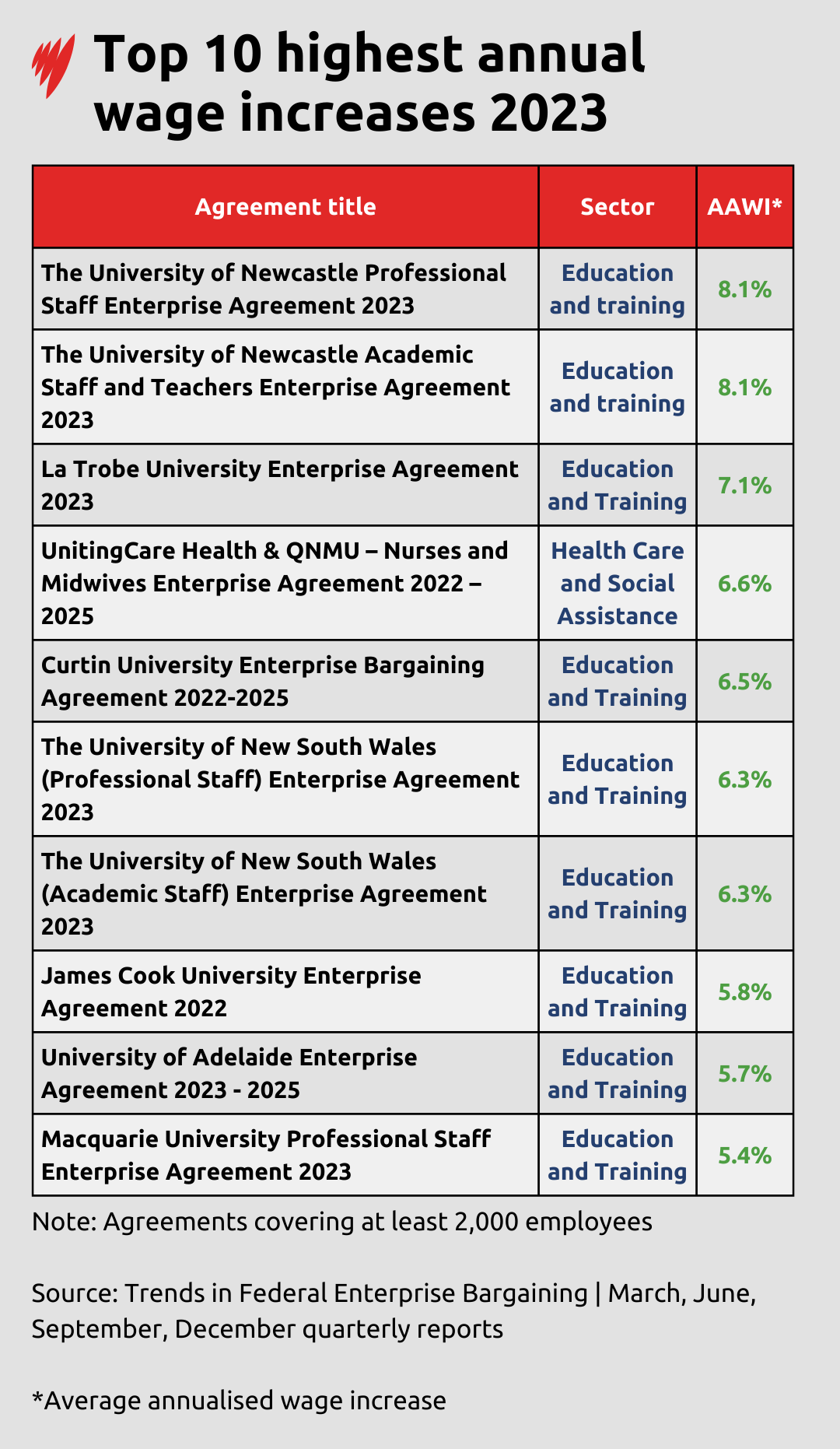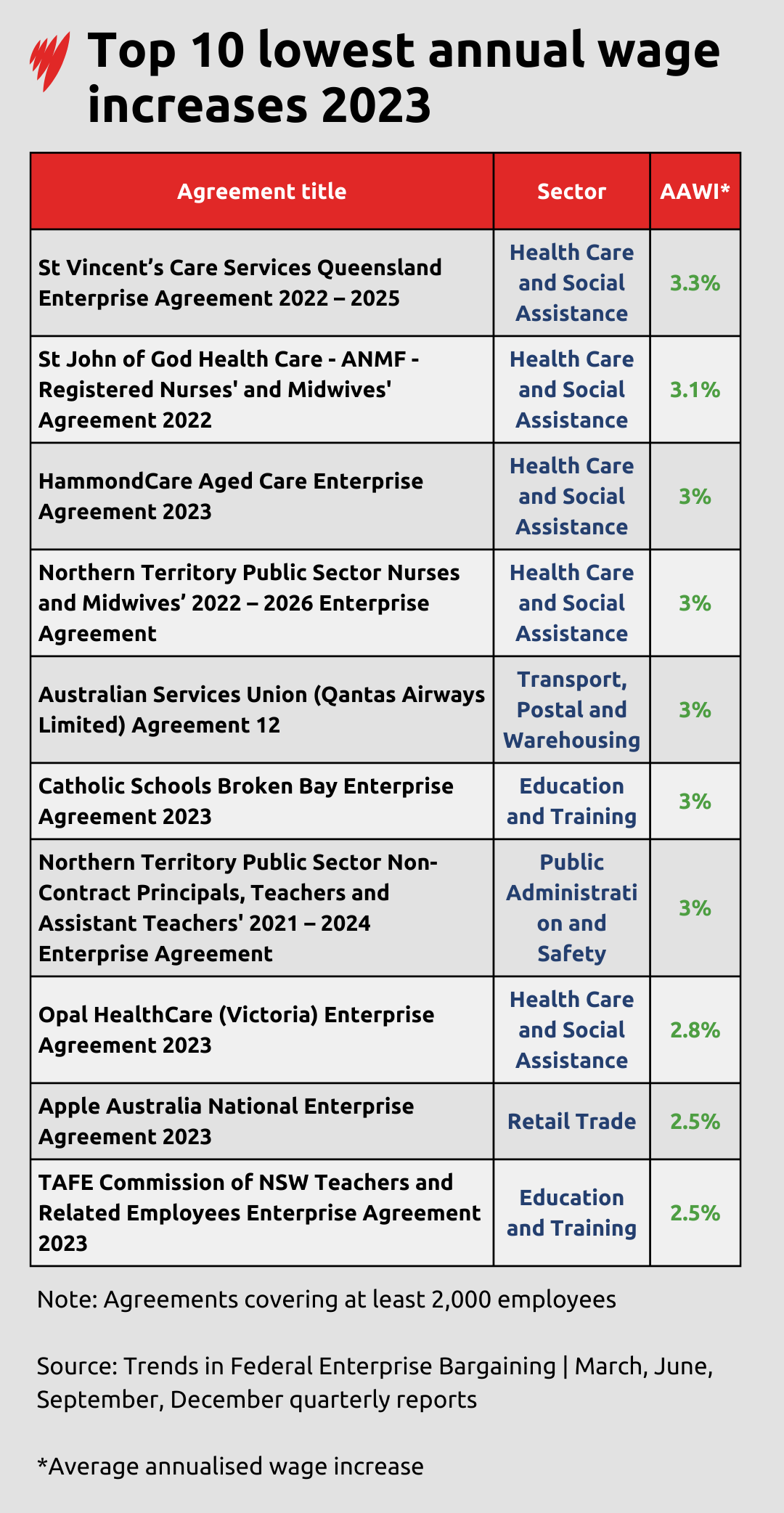Some 136,000 workers have scored pay rises averaging 4.3 per cent, according to new data, while some will take home increases of more than 7 per cent.
The figures come in new enterprise agreement data for the December quarter, published by the Department of Employment and Workplace Relations on Thursday.
There were 1,020 private and public sector agreements struck over the final quarter of 2023 that had quantifiable wage increases, with the average annual wage increase coming in at 4.3 per cent — up 0.2 points on the September quarter.
The slight uplift was driven by public sector agreements in which the average annual pay rise was 5.2 per cent, marking a 0.8 point improvement quarter-on-quarter. Meanwhile, the average increase in private sector agreements fell 0.2 points to 3.8 per cent.
In real terms, the average increase across both sectors was marginally higher than inflation,
There were 272 cases where wage increases were not quantifiable. This means they were not consistent for all employees, or were linked to other sources such as the Consumer Price Index or the Fair Work Commission’s annual wage review.
Who got the highest, and lowest pay increases?
The December figures also reveal the average annual wage increases at large employers — those with at least 2,000 workers covered by an agreement.
Of those quantifiable for the December quarter, workers covered by La Trobe University's enterprise agreement secured the highest average annual wage rise at 7.1 per cent.
Curtin University's new agreement delivered an average increase of 6.5 per cent, while rises of 6.3 per cent came in deals at the University of New South Wales.
The release of the December quarter data also provides a full picture of 2023.
Average increases in agreements at the University of Newcastle topped the list for the year at 8.1 per cent. At the other end of the scale, agreements covering workers at tech giant Apple and the TAFE Commission of NSW had average increases of 2.5 per cent.

The Education and Training sector had the highest wage growth in 2023. Source: SBS News

Not all employees received pay rises in line with inflation, with some almost two percentage points lower than CPI. Source: SBS News
The lowest was in rental, hiring and real estate services at 1.9 per cent, followed by accommodation and food services, and retail trade, at 2.1 and 2.9 per cent respectively.
Enterprise bargaining can involve more than just wages. Other things that can be negotiated include hours of work, flexible working arrangements, allowances, and leave allocation.
The duration of agreements can also vary, and wage increases can differ in each year of the agreement term.
Agreements approved across the private and public sectors — including those at smaller employers and where average wage increases weren't quantifiable — in 2023 had an average duration of about 2.5 years.


